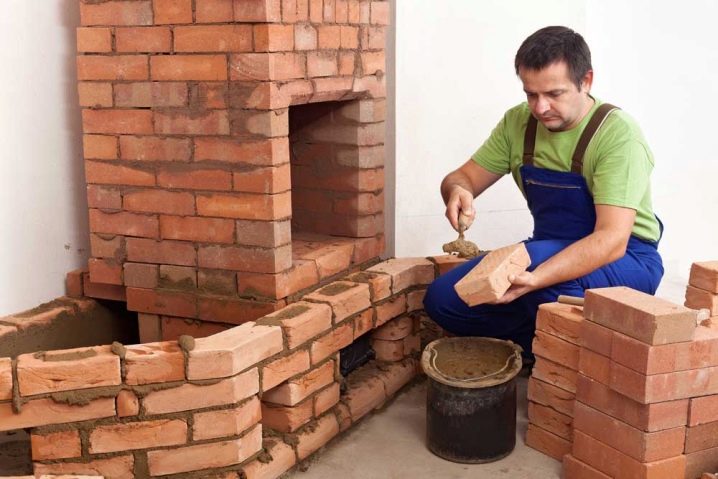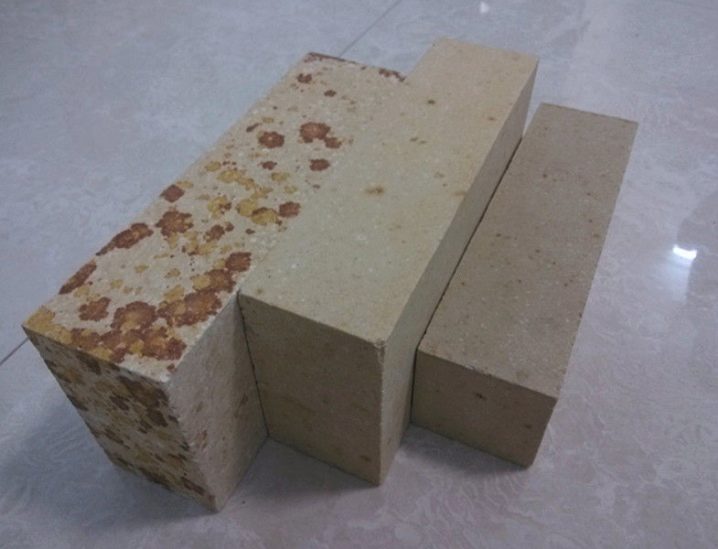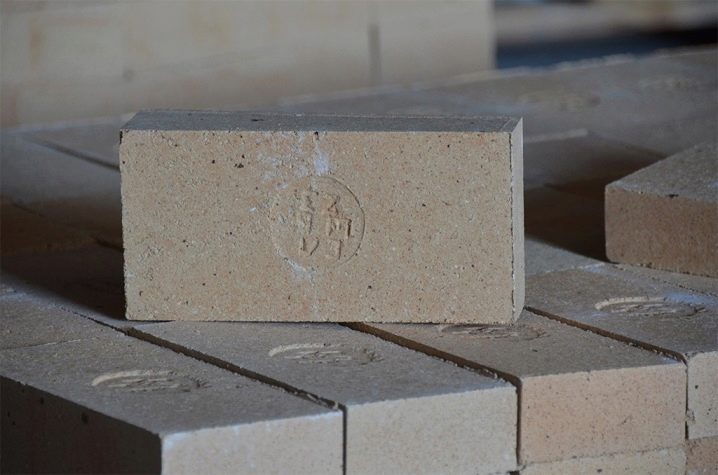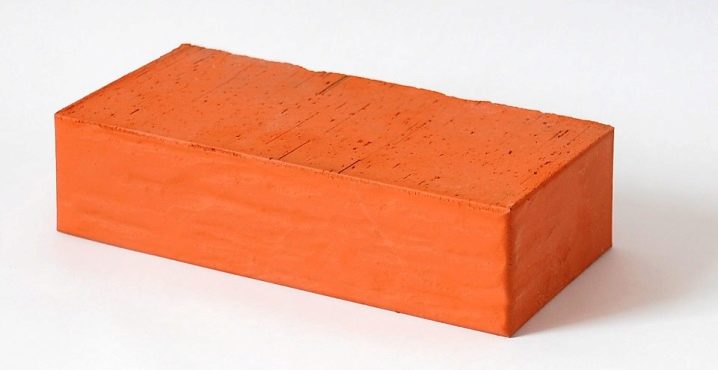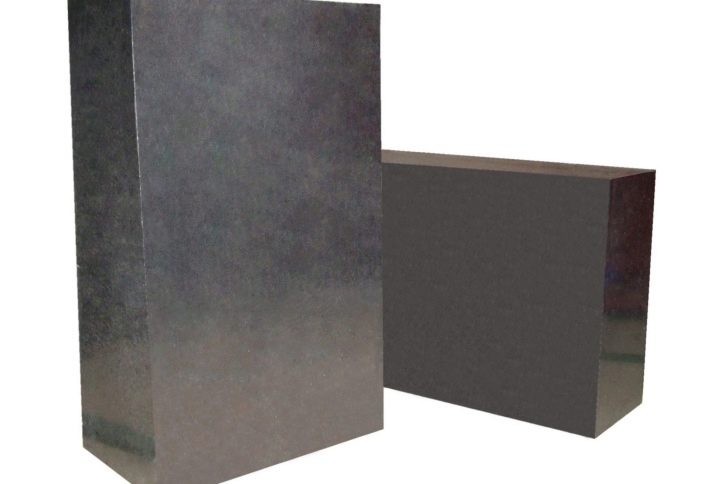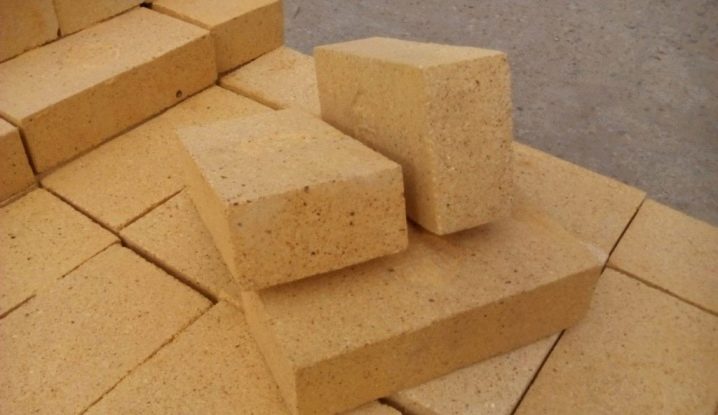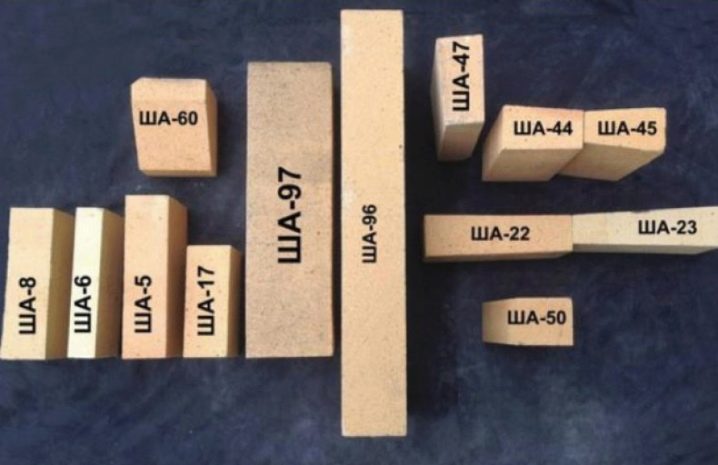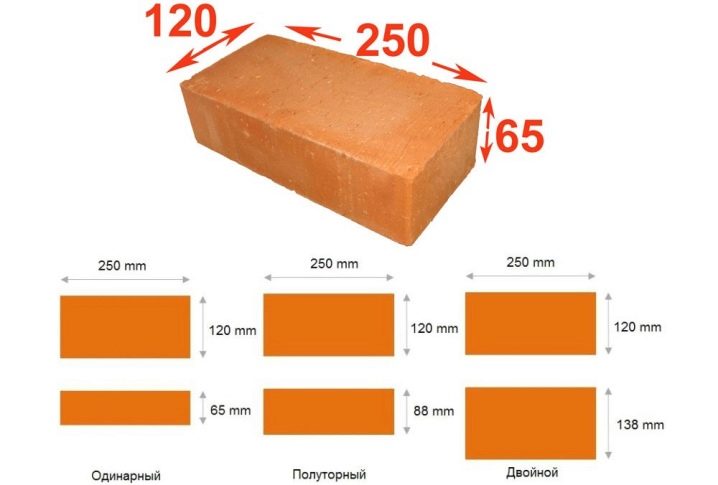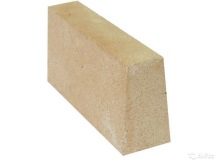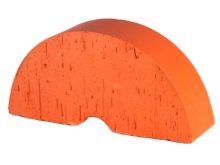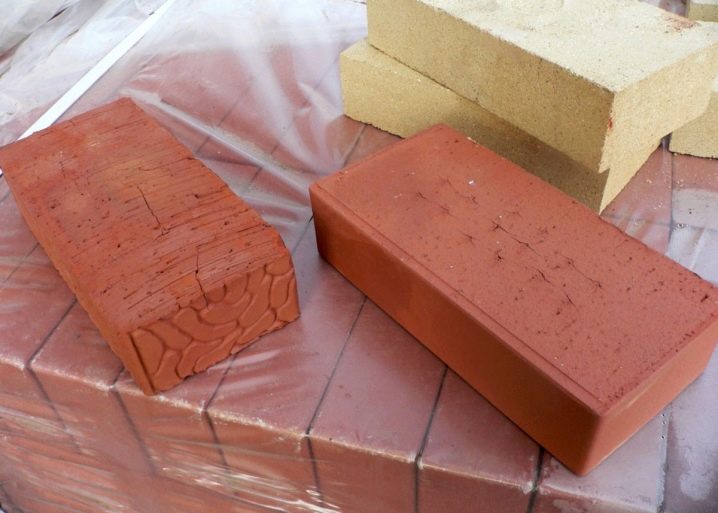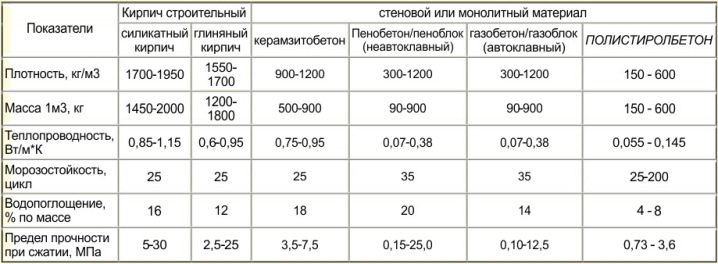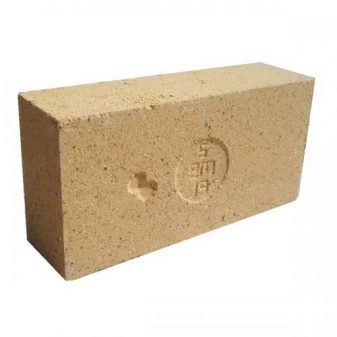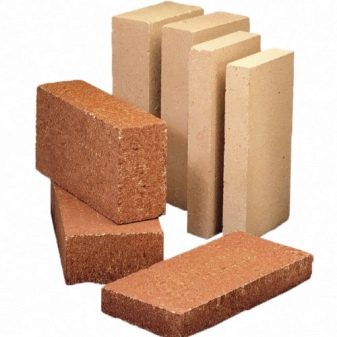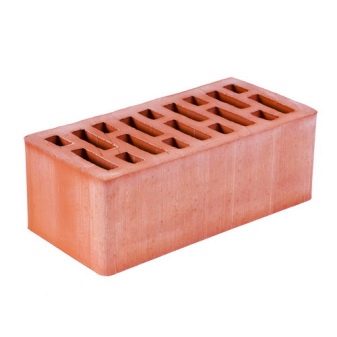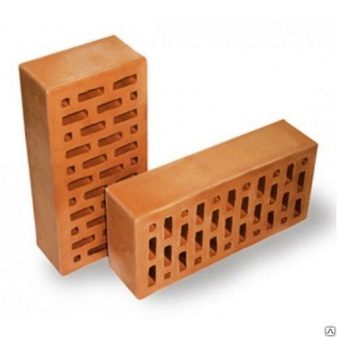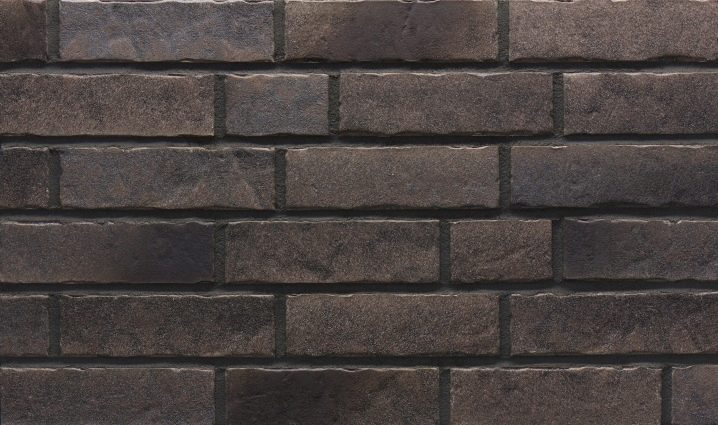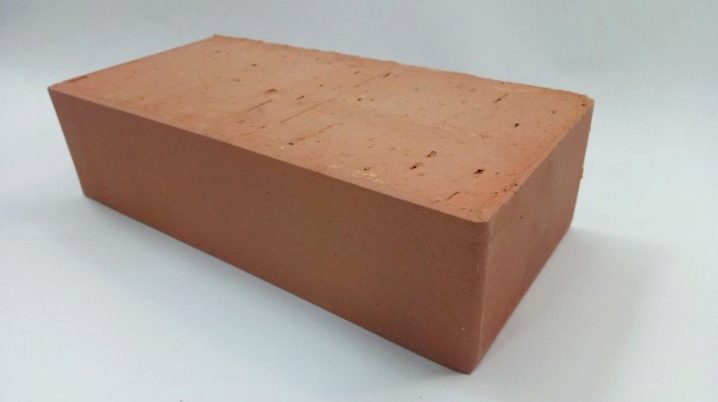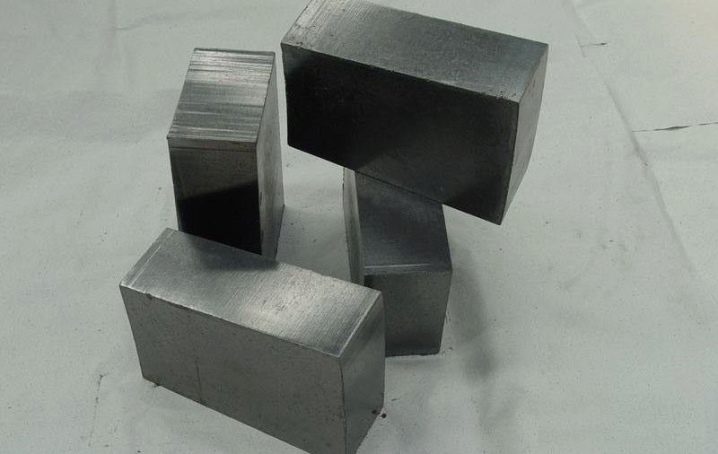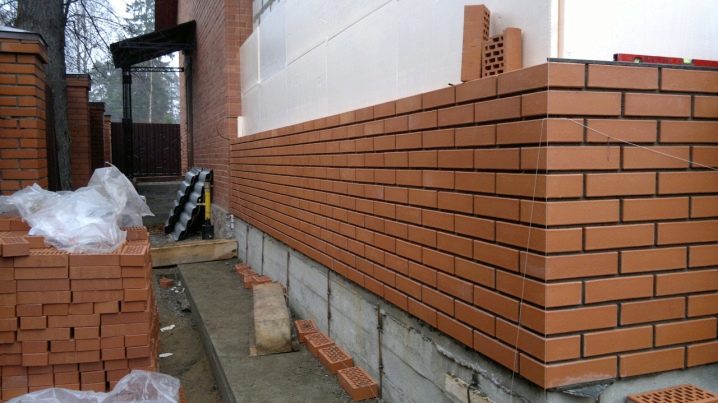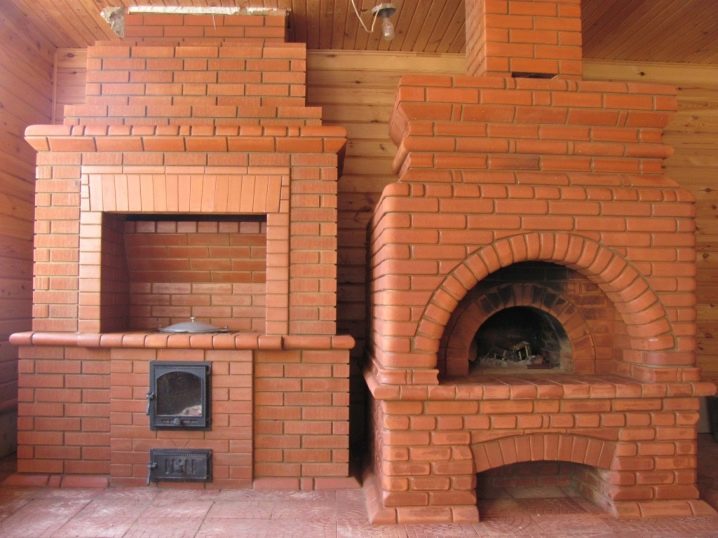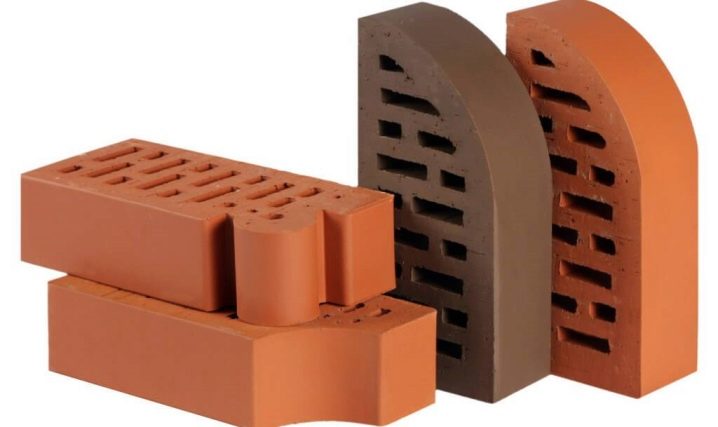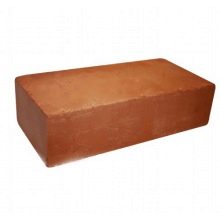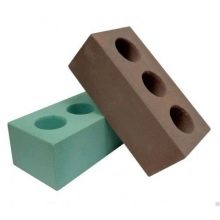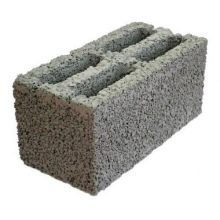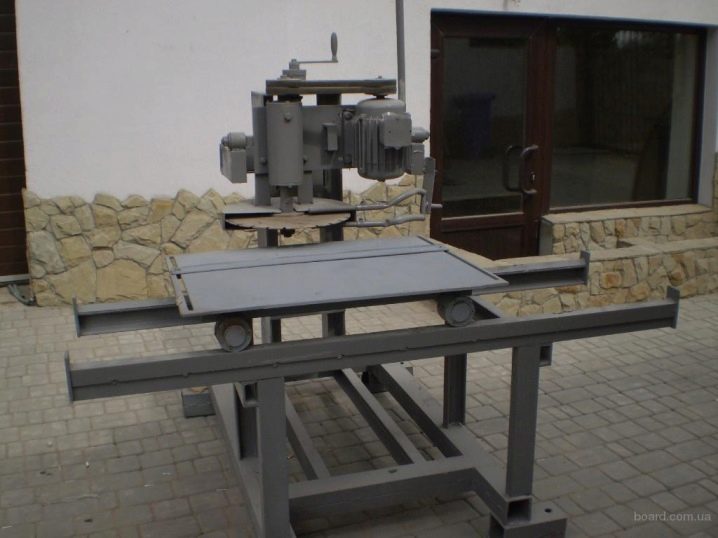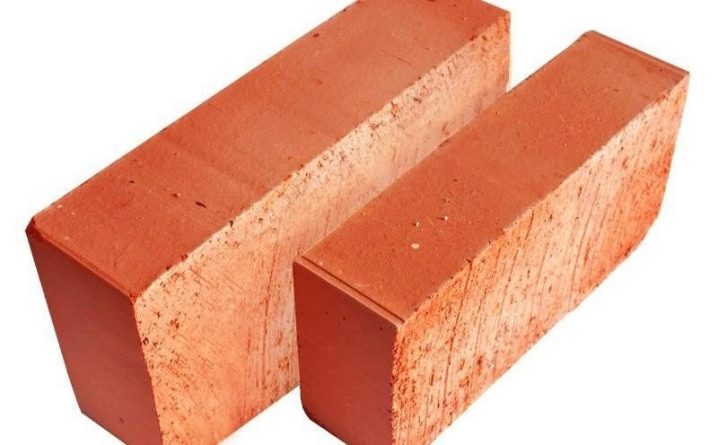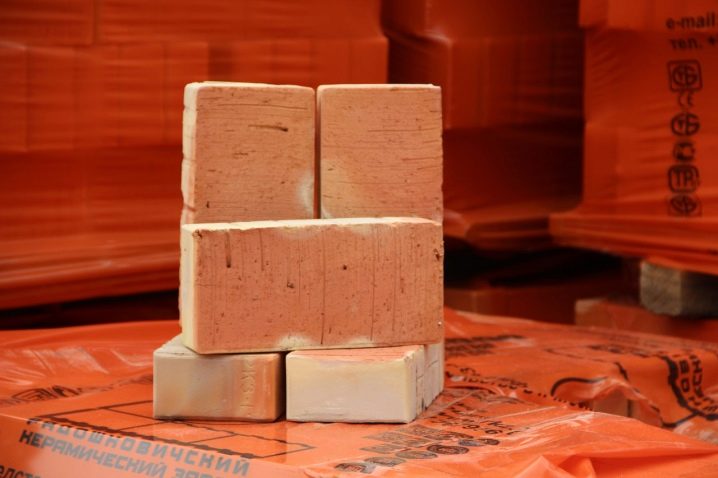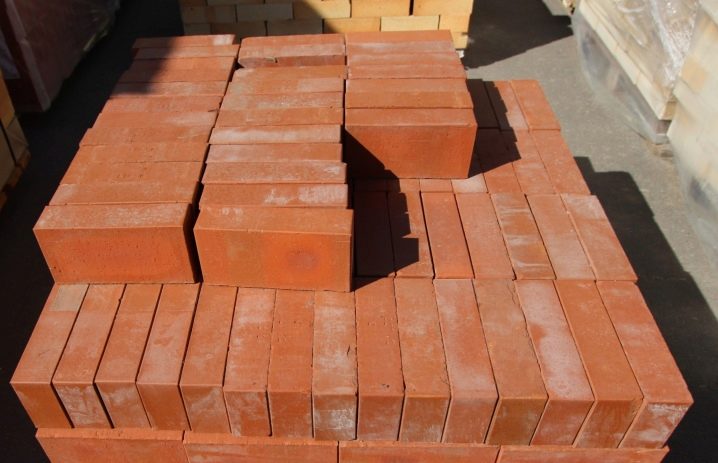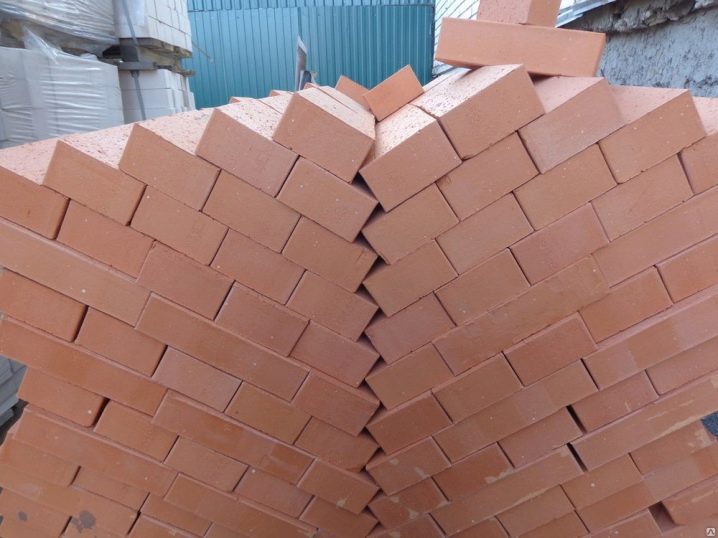Kiln brick peculiarities and recommendations for its choice
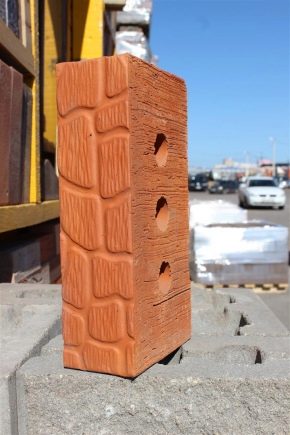
Many people think that the time of stoves and fireplaces has passed. However, even today, some rural houses are heated by stoves, and fireplaces are an attribute of luxury housing.
To prevent the furnace from cracking during operation, it should be laid out from a special refractory material. The heat-resistant brick is different from the usual high resistance to high temperatures, it retains heat for a long time and gives it to the external environment for a long time.
Special features
Kiln brick can be different:
- quartzin which sand is added;
- chamotte - it consists of refractory clay;
- the main - has a limestone-magnesia composition;
- carbon - it is made of graphite and coke.
Each of them is designed for different purposes. For example, carbonaceous material lay blast furnaces at steel mills.
The most common in the home and industry received fireclay bricks. This is a solid stone, which is composed of 70% refractory heat-resistant clay. Such material accumulates well and gives off heat for a long time. The air, warmed up with the help of aluminous brick, is considered by connoisseurs of a healthy lifestyle curative.
Fireclay bricks steadily in contact with open fire, maintaining a temperature much higher than 1 thousand degrees. Increased heat resistance allows it to heat up and cool an infinite number of times, while not collapsing and without changing its appearance. It is chamotte brick involved in the creation of the firebox (firebox), and around the fireplace you can lay out a ceramic stone or any other that looks more attractive.
In addition to stoves and fireplaces, heat-resistant brick is used to create chimneys, furnaces solid fuel boilers, for the construction of stationary barbecues and barbecues.
Specifications
To find out the characteristics of the oven brick, you should carefully examine its labeling. The first letter indicates the type of product, for example, W - chamotte. The second letter indicates the degree of refractoriness, for example, A - 1400 degrees, B - 1350 degrees. Product dimensions are marked in the following figures. The final letters indicate the manufacturer's abbreviation.
Size, weight
The furnace brick happens standard, double and one-and-a-half. The size of the standard (ShB-5) is 23x11.4x6.5 cm, and the larger one (ShB-8) is 25x12.4x6.5 cm. Weight 1 pc. brick of the ShB-5 brand - 3,5 kg. Four kilograms weigh one brick brand ShB-8.
The form
In addition to the traditional rectangular shape, manufacturers produce trapezoidal, wedge-shaped and arched kiln brick. A variety of species helps to use it in non-standard places.
Porosity and strength
The porosity of the stone affects heat transfer. Such material is less durable, but it heats up easily and for a long time gives off heat to the space. The denser the brick, the more heat-resistant and heavy it is, the harder it is to heat it.
Density indicators correspond to the numbers 100, 150, 200, 250, 500. Choosing a material with the highest values for your furnace, we condemn ourselves for a long and painful warming up. The optimum density is 250, that is 1800 kg / m.
Frost resistance
Such marking makes it possible to understand how much a material is able to absorb and release moisture. When choosing a brick for a chimney, you should pay attention only to frost-resistant products.
It can be concluded that the furnace brick has the following characteristics:
- it is not too large and does not have a significant load on the foundation;
- optimal safety margin - 1800 kg / m;
- brickwork can accumulate heat and share it with the surrounding space for a long time;
- the building material has good adhesion to the mortar, which leads to savings in cement and does not create problems during installation;
- high refractoriness makes it possible to withstand temperatures up to one and a half thousand degrees;
- The brick is strong and durable: impeccable quality is not affected by numerous heating and cooling.
The negative aspects include the high cost of the product and the ability to draw in moisture.
Species
The construction market is rich in varieties of refractory bricks. They are distinguished by their strength, density, heat resistance level and other characteristics. Each of them is designed for specific purposes.The most heat-resistant options are suitable for the firebox - they easily withstand direct contact with fire.
For chimneys choose frost-resistant brand of stone, for lining - kiln front brick.
Chamotte
The most used type of kiln material is a solid brick made of chamotte clay. It is popular because it is universal: it can be used to lay out the stove completely - from the firebox to the chimney. Its characteristics make it possible to withstand prolonged contact with "live" fire. A variety of fireclay brick forms facilitates construction work. To give greater porosity, alumina is added to the structure of the product — this allows the material to accumulate and release heat.
Fireclay brick perfectly copes with its tasks, but if it is executed poorly, then you can forget about all its positive characteristics. To check the quality of the stone, you should pay attention to some factors.
- The brick should have a yellow shade, similar to straw, - white color indicates insufficient firing. This material does not have the necessary strength and is not able to collect heat.
- The burnt stone will be covered with a glassy coating and does not bode well either. It is not easy to assemble a fireplace from such material - the solution does not hold on it.
- If you knock on a brick with something solid, it will “respond” with a metallic sound - this means that the quality of the product is all right.
- You can try to break the product - a real high-quality fireclay brick will not dust and crumble with crumb: its fragments will be large and clean.
Ceramic
The red clay ceramic brick is produced by firing. Him used in external places of the fireplace, not in contact with open fire. It is inferior chamotte product in many respects.
But there are positive points: it is easy to handle, because literally with a hammer you can reduce it to the required volumes.
Stone size - 25x12x6.5 cm, fire resistance - 1200 degrees. Based on the heritage of the past, the industry produces products mostly red. But recently, thanks to pigment additives, yellow and white ceramic bricks can be found on sale.
Quartz
This option is made from quartz sand and fireclay by firing.This type of brick is also inferior to chamotte, but the product looks much nicer. It is used for laying the furnace in places associated with metal structures..
Quartz brick does not tolerate alkaline reactions, so it is not used for the foundation of the furnace, where lime can be involved. Direct contact with the flame is also undesirable.
Quartz stone has proven itself in the construction of chimneys. It has dimensions - 25x12x6.5 cm and refractoriness - up to 1200 degrees.
Kiln facing brick
It is a kind of quartz product and used for lining fireplaces, stoves, stationary barbecues and barbecue. It comes with clear geometric shapes and a diverse color palette.
Carbonaceous
This type of stone is made by pressing graphite or coke. is he needed to make blast furnaces at steel mills.
Main
It is composed of magnesia and lime mixture. Used directly in industry.
What is better to choose?
When choosing a refractory brick, you need to know what it will take: for building a stove in a house or a bath, for installing a pipe or a firebox.The variety of purchased material depends on its purpose.
For the internal device of the furnace and the places in contact with fire, a stone with high fire-resistant indicators is selected. However, it must be porous in order to accumulate heat and heat the room for a long time.
The outer facing brick, on the other hand, should not be heated. His task is to have a beautiful appearance.
Making a fireplace facing stone, it is easy to choose a color that matches the interior. Industry represents a large selection of shades: from white to brown.
In the next step of choosing a building material, you should pay attention to the points described below.
- It is imperative to check the labeling and find out what kind of work is intended material. There are products frost-resistant, with increased porosity or refractoriness. To lay the furnace in the composition of the product must be at least 25% aluminum, and the refractoriness index - 1700 degrees. There are universal corpulent types of bricks, for example, M200, which can be used for heating, supporting structures and cladding.
- It is necessary to check the material for defects: there should not be chips, dents, deformations.Each brick must have a clear geometric shape.
- Attention should be paid to the uniformity of the structure - the uniform color indicates good quality. With the help of color, you can understand which brick is in front of us: unburned (light) or burned out (with glitter). Such a marriage for laying the oven is not suitable.
- It is desirable to take all construction bricks from one batch. If you have to buy more, then you can not get the perfect match.
- The product is checked by sound - a good stone should ring when struck.
Choosing bricks, it is better to have an idea about those products that absolutely can not be used for the stove, fireplace, stationary barbecue and any structure associated with open fire.
These include:
- hollow stone - it does not have sufficient density;
- raw - may soften in contact with the solution or being in a damp room;
- silicate brick does not have sufficient heat resistance;
- does not apply the stone, made by slip method.
The choice of building material should be taken seriously - then the fireplace will really warm up without losing its attractive appearance for many years.
What to cut?
If during the installation of the furnace you need to cut a brick, then best to use stone cutting industrial machines. But since at home such a task is impossible, You can resort to the usual Bulgarian. For work fit edged, abrasive or diamond discs (the latter will last longer).
Before working with a stone, you should make a markup with a pencil. Cut bricks in two ways: dry and wet. When working with dry material, you need to be prepared for a large amount of dust and pre-stock a respirator and goggles.
A cleaner stone cutting process occurs if you pre-soak the building material in cold water for half an hour. The brick will become softer, pliable and will not annoy the dust.
Oven reviews
Reviews and expert advice on the technical characteristics of the material. If the stove is folded according to the rules, a high-quality brick is used, then it will not create problems even in the distant future.
Temperature limit
Stoves advise all material for stoves and fireplaces to choose heat-resistant, regardless of the place of use:
- for the firebox device - 1800 degrees;
- for interior walls - 700-1200 degrees;
- for chimneys and chimneys - 700 degrees;
- for facing - 700 degrees.
Thermal conductivity
A full-fired kiln brick has a greater density and thermal conductivity, but for each type there are different indicators under normal conditions (15-25 degrees):
- magnesite - 4.7-5.1 W / (m * grad) with a density of 2600-3200 kg / m³;
- carborundum - 11-18 W / (m * hail) with a density of 1000-1300 kg / m³;
- chamotte - 0.85 W / (m * grad) with a density of 1,850 kg / m³.
Experts advise to choose low thermal conductivity - this will provide an opportunity to protect materials adjacent to the structure from high heat. Fireclay brick is able to retain heat, but at the same time its thermal conductivity is rather low. This material has the most positive reviews.
Resistance to aggressive environment
According to reviews of stoppers, it can be concluded that the fireclay brick reacts poorly to the acidic environment, so you should not use it where there is a threat of contact with acid. Quartz brick suffers from alkaline reactions - it is not used in places where it is planned to work with lime.
Water absorption
According to experts, the water-blowing effect of the kiln brick is quite large.During roasting, pores are formed in the stone that are capable of receiving moisture from the external environment. If the building material is left in the open, under snow or rain, it can gain 30% of its original weight. Therefore, you should pay attention to the place of storage of bricks and exclude its contact with a moist environment.
Information about the furnace brick will not make a mistake in choosing a building material. But even with theoretical literacy and a full study of the topic, it is better to entrust the construction of the furnace itself to a professional. Mistakes in such a matter can cost the health and lives of the household.
You will find more tips on choosing bricks for the stove in the video below.
